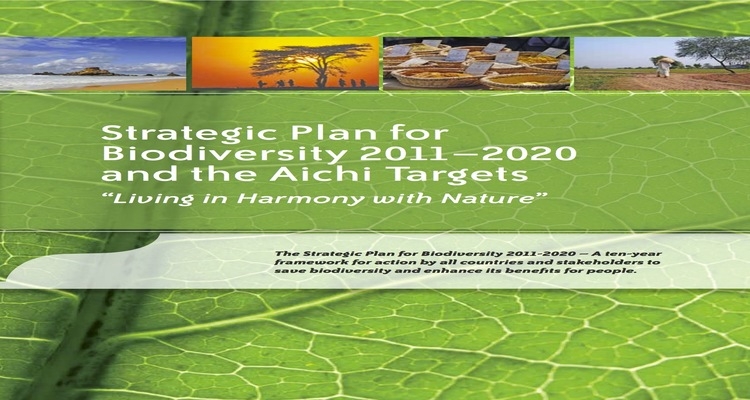Biodiversity Matters: United Nations Biodiversity Conference

The 14th Meeting of the Conference of the Parties to the Convention on Biological Diversity (COP 14), also known as the United Nations (UN) Biodiversity Conference, is currently underway at Sharm El Sheikh, Egypt. The 9th meeting of the Conference of the Parties serving as the meeting of the Parties to the Cartagena Protocol on Biosafety (COPMOP9) and the 3rd meeting of the Conference of the Parties serving as the meeting of the Parties to the Nagoya Protocol on Access and Benefit Sharing (COPMOP3) are also being held alongside COP14 at the ‘City of Peace’ from 17 to 29 November 2018.
It has been over 25 years since world leaders gathered for the Earth Summit at Rio de Janeiro adopted the ground-breaking agreement to protect all life on Earth -the Convention on Biological Diversity (CBD). On World Environment Day 1992, the CBD was adopted and opened for signature and it entered into force on the 29th of December 1993. This year marks the 25th anniversary of the entry into force of the Convention on Biological Diversity and the theme of the Conference this year is “Investing in biodiversity for people and planet”
The CBD is an international treaty for the conservation of biodiversity, the sustainable use of the components of biodiversity and the equitable sharing of the benefits derived from the use of genetic resources. The Conference of the Parties (COP) is the highest governing body of the Convention on Biological Diversity. The COP brings together representatives of the Parties to the Convention along with other key players from civil society, business, indigenous and local communities, youth and others to review and advance the implementation of the Convention. The meetings are now held every two years.
With 196 Parties so far, the Convention has near universal participation among countries. The Convention seeks to address all threats to biodiversity and ecosystem services, including threats from climate change, through scientific assessments, the development of tools, incentives and processes, the transfer of technologies and good practices and the full and active involvement of relevant stakeholders including indigenous and local communities, youth, NGOs, women and the business community.
The Cartagena Protocol on Biosafety and the Nagoya Protocol on Access and Benefit Sharing are supplementary agreements to the Convention. The Cartagena Protocol, which entered into force on 11 September 2003, seeks to protect biological diversity from the potential risks posed by living modified organisms resulting from modern biotechnology. To date, 171 Parties have ratified the Cartagena Protocol. The Nagoya Protocol aims at sharing the benefits arising from the utilization of genetic resources in a fair and equitable way, including by appropriate access to genetic resources and by appropriate transfer of relevant technologies. It entered into force on12 October 2014 and to date, it had been ratified by 105 Parties.
The Strategic Plan for Biodiversity 2011-2020 and its Aichi Biodiversity Targets provide an agreed overarching framework for action on biodiversity and a foundation for sustainable development for all stakeholders, including agencies across the UN system. The Strategic Plan for Biodiversity includes a vision for 2050, five strategic goals and twenty Aichi Biodiversity Targets, mostly to be achieved by 2020.
The twenty Aichi Biodiversity Targets are grouped under five strategic goals: address the underlying causes of biodiversity loss by mainstreaming biodiversity across government and society, reduce the direct pressures on biodiversity and promote sustainable use, improve the status of biodiversity by safeguarding ecosystems, species and genetic diversity, enhance the benefits to all from biodiversity and ecosystem services and enhance implementation through participatory planning, knowledge management and capacity building.
The 2050 Vision stresses the role of biodiversity for human well-being: “biodiversity to be valued, conserved, restored and wisely used, maintaining ecosystem services, sustaining a healthy Planet and delivering benefits essential for all people”.
The United Nations General Assembly at its 65th session declared the period 2011-2020 to be the “United Nations Decade on Biodiversity, with a view to contributing to the implementation of the Strategic Plan for Biodiversity for the period 2011-2020”. The goal of the United Nations Decade on Biodiversity is to support the implementation of the Strategic Plan for Biodiversity 2011-2020, its Aichi Biodiversity Targets, and to promote its overall vision of Living in Harmony with Nature.
The existing agreements have failed to stem catastrophic decline of biodiversity across the globe, the worst since the extinction of the dinosaurs. Biodiversity loss is expected to accelerate in the next 30 years due to climate change and population pressures and it will take a huge concerted global effort to arrest the ‘sixth mass extinction.’ Conservationists are hopeful that the ongoing COP14 will successfully lay down the framework for a new global deal that could possibly be adopted at the next UN Biodiversity Conference at Beijing in 2020.
Rituraj Phukan
Videos
Videos
Videos
@ignitingmindsmagazine
@IgnitingMindsin
Top Stories
- Dedicated to the Sparrows, Forests and Water
- The United Nations Decade of Ecosystem Restoration
- How technology in agribusiness affects climate change, a concrete solution.
- Restless Youth Seek Climate Action
- Telangana Jagruthi International Youth Leadership Conference 18,19,20th January 2019
- Sports for Climate Action Framework launched at COP24
- COP24: One Week of Misgivings
Videos
Businesses
- Can Home Remedies Increase Your Height.
- Success Comes When We Make Innovation a Habit
- Do You Want to Be a Green Entrepreneur?
- Igniting Minds Official Web Portal Launched in New Delhi.
- Strive To Drive The Life
- Do Mobile Apps Facilitate Small Businessmen?
- Water Conservation, Preservation and Restoration. A Global Engineering Challenge.